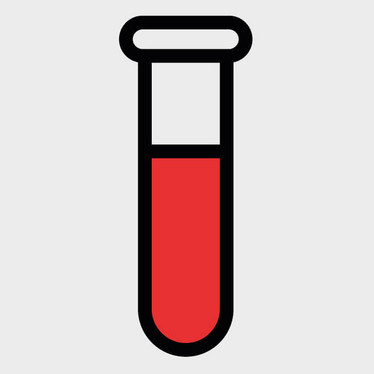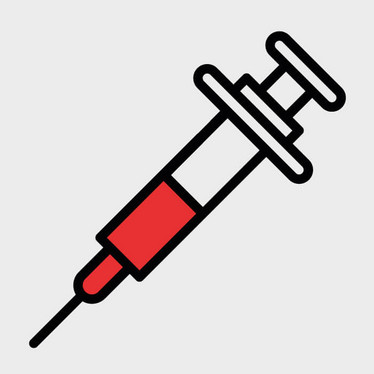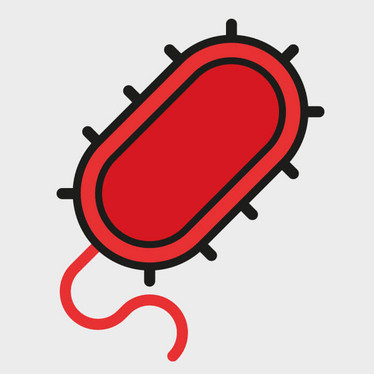
Unlocking Serology’s Secrets
We explore the work of researchers aiming to revolutionize the diagnosis of fibromyalgia and cholera using blood-based technologies…
Routine blood tests – though arguably overused at times – play a central role in serious disease screening (1). Dreams of breakthrough technology capable of cheaply diagnosing multiple diseases from a single drop of blood appear to have been dashed for now; Elizabeth Holmes, CEO of Silicon Valley startup Theranos, perpetuated breathtakingly false claims about the ability of her company’s tests – and the legal fallout continues (2). And though groups of researchers continue to push the limits of what’s possible in (accessible) multiple-disease diagnosis – the winners of the Qualcomm Tricorder XPRIZE being one example – in many scenarios, a simple blood test for a single disease represents a significant challenge.
And so, thousands of researchers continue to explore how blood-based testing modalities could meet unmet clinical need. Here, we focus on the work of two such groups of scientists. Although at different stages along the translational journey and divided by very different technologies, they are united in their desire to improve the diagnosis of diseases that evade detection.

The Fibromyalgia Fingerprinters
Fibromyalgia is typically associated with chronic, systemic pain and a variety of other symptoms, including fatigue and extreme sensitivity. Distinguishing it from other conditions with a similar presentation, such as chronic pain syndrome, remains a major hurdle. Biomarker development has proven challenging, and although functional magnetic resonance imaging (FMRI) technology has driven new technical insights (3), it suffers from a number of considerable drawbacks; it is unwieldy and expensive, and still struggles to distinguish between fibromyalgia patients and others within the larger subset of chronic pain syndromes.
Kevin Hackshaw, a physician based at the Ohio State University Wexner Medical Center, is lead author of a recent paper in the Journal of Biological Chemistry that outlines a new tool capable of diagnosing fibromyalgia and other chronic pain disorders using less than a milliliter of blood (4). “We’ve been looking at the problem for a number of years – trying to develop a relatively noninvasive, reproducible biomarker for a signature fingerprint of fibromyalgia and related syndromes,” he says.
Using mass spectrometry, the team has been able to identify targets – as yet unpublished – that they believe could be used as possible candidates for future testing. The hope, explains Hackshaw, is that these moieties could aid in the stratification of the disease. However, to achieve this goal, he recognizes the need to scale up operations. “Our first study in 2013 (5) looked at a population of 15–20 patients, whereas in the latest study, we looked at 50 patients,” he says. “Now, we want to look at several hundred patient samples to see if we can further distinguish between different subpopulations of fibromyalgia.”
Indeed, Hackshaw is hopeful that serotyping patients could allow for more tailored treatment. “If we can identify certain subsets of patients with fibromyalgia who suffer high pain and poor sleep, we could treat them appropriately – with a tricyclic agent, for example,” he says. “Likewise, for those suffering from high levels of depression, we could advise treating them with tailored antidepressants.” Perhaps just as importantly, such an approach could dramatically change how pain is managed. “A large percentage of chronic pain patients, who, under our testing, might meet biological definitions for fibromyalgia, are being treated with opioids,” Hackshaw says. “Yet we know that the use of opioids for these patients is inappropriate (6). If we are able to earlier identify these individuals, then that will hopefully persuade practitioners to avoid even bringing opioids into the frame.”
A number of challenges lie ahead – chief among them creating a tool that can be used at the bedside. “We’re testing whether handheld spectrometers could be a useful adjunct,” he says. “That’s something that would be much more scalable, allowing it to be used in all kinds of hospital laboratories with basic bench space.”
The Cholera Cartographers
On the other side of the globe, another team of researchers is trying to improve the identification of a different disease through the development of an appropriate blood test. No longer a major threat in the developed world, cholera outbreaks continue to plague developing countries despite improvements in sanitation and other preventative measures.
“In a minority of cases, there might be sufficient infrastructure allowing for laboratory analysis of stool that confirms cholera,” says Daniel Leung, Assistant Professor of Infectious Diseases at the University of Utah (UU). “Without adequate public health surveillance infrastructure, the estimation of the incidence of cholera in a region is difficult,” he continues. “To make matters worse, cholera seems to be prevalent in areas where there is not great infrastructure for clinical surveillance – the recent outbreaks in Syria and Yemen attest to that.”
Leung is coauthor of a recent paper in Science Translational Medicine that describes a new tool, based on a number of antibody markers, for better cholera detection and management (7).

Working with collaborators in Bangladesh, which routinely has over 100,000 cases of cholera a year (8), the team of researchers from the US, Bangladesh and France, including UU, were able to study the antibody composition of blood samples from a variety of patients – those with cholera, those without, and those with a history of the disease. “A number of different antibodies can be detected in blood at various levels,” says Leung. “By measuring these levels after a month, after three months, and then at longer time intervals, we are able to look at the rise and fall of particular antibodies in populations exposed to the disease.”
To further validate their efforts, the team decided to look closer to home. The researchers used samples obtained from a prior study (9) where North American volunteers were challenged with cholera, then blood samples were taken at defined intervals. “We found that the thresholds for particular antibodies in both populations were comparable,” says Leung. Andrew Azman, a research scientist at Johns Hopkins Bloomberg School of Public Health, used machine learning to analyze the data as part of the research. “Dr. Azman was able to create and validate a model using machine learning by combining the Bangladeshi and North American data,” explains Leung. “We were able to look at the level of antibodies in someone’s blood and extrapolate from that how long ago they had been exposed to cholera.”
Leung hopes the approach can be used at a population level to help decision-makers decide when and where to target interventions. “By sampling a population of a big city or town, you would be able to roughly tell how long ago that population saw cholera,” he says. “Vaccines and water sanitation are the best preventative measures against cholera, but we need to know how to strategize them, because there are limited resources available for interventions.”
Before that dream can be realized, the scope of the research must be widened. “The first step will be to further validate our data – we know it’s valid for Bangladesh and North America, but we need to look at other areas of the globe to truly be confident,” he says. The team is collaborating with clinicians in Haiti to conduct a prospective study that follows the immune response of the Caribbean islanders over a period of several months to a year. “At the same time, the second step is to deal with another technical problem. As more and more of the world is being vaccinated, how can we separate detection between those recently exposed to cholera and those vaccinated and thus carrying protective antibodies?” Leung asks. To solve that issue, the team is exploring the differences between antibodies formed in response to the natural disease and those formed following vaccination.
Another more major challenge remains. The test for the best of the six antibody markers is cumbersome and labor-intensive. “It’s not a simple ELISA test (the standard for antibody tests), but rather a functional test that involves growing bacteria in a Petri dish,” says Leung. “We’re trying to come up with better ways to measure these antibodies – or even better biomarkers.” Despite this challenge, Leung is optimistic that, in the long term, the approach could have significant public health benefits: “There are several very nice publications, particularly looking at dengue fever (10), that show similar approaches can be successful.”

- K Siau, “Routine blood tests are a basic screening tool for serious pathology”, BMJ, 5, 357 (2017). PMID: 28583946.
- The New York Times, “Theranos Under Federal Criminal Investigation, Adding to Its Woes” (2016). Available at: nyti.ms/2ZMlTXJ. Accessed May 1, 2019.
- DL Morton et al., “Brain imaging of pain: state of the art,” J Pain Res, 9, 613-624 (2016). PMID: 27660488.
- KV Hackshaw et al., “Metabolic fingerprinting for diagnosis of fibromyalgia and other rheumatologic disorders,” J Biol Chem, 294, 2555-2568 (2019). PMID: 20523152.
- KV Hackshaw et al., “A bloodspot-based diagnostic test for fibromyalgia syndrome and related disorders,” Analyst, 138, 4453-4462 (2013). doi: 10.1039/C3AN36615D.
- MA Fitzcharles et al., “Opioid use, misuse, and abuse in patients labelled as fibromyalgia,” Am J Med, 124, 955-960 (2011). PMID: 21962316.
- AS Azman et al., “Estimating cholera incidence with cross-sectional serology,” Sci Transl Med, [Epub ahead of print] (2019). PMID: 30787170.
- MT Islam et al., “Cholera Control and Prevention in Bangladesh: An Evaluation of the Situation and Solutions,” J Infect Dis, 218(suppl_3), S171-172 (2018). PMID: 30169839.
- WH Chen et al., “Single-dose Live Oral Cholera Vaccine CVD 103-HgR Protects Against Human Experimental Infection With Vibrio cholerae O1 El Tor”, Clin Infect Dis, 62, 1329-1335 (2016). PMID: 27001804.
- H Salje et al., “Reconstruction of antibody dynamics and infection histories to evaluate dengue risk,” Nature, 557, 719-723 (2018). PMID: 29795354.
















